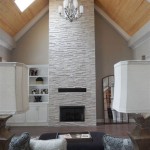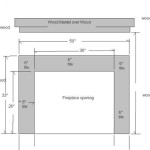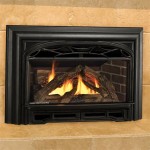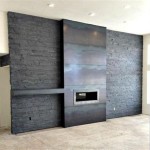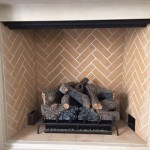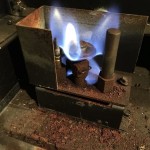Do Electric Fireplaces Increase Utility Bills? A Comprehensive Analysis
Electric fireplaces have gained considerable popularity as a cost-effective and aesthetically pleasing alternative to traditional wood-burning or gas fireplaces. They offer the ambiance of a real fire without the associated complexities of fuel storage, chimney maintenance, or potential safety hazards. However, a common concern among potential buyers revolves around their impact on electricity consumption and, consequently, utility bills. This article provides a detailed analysis of the energy consumption of electric fireplaces and the factors that influence their cost of operation.
Understanding how electric fireplaces operate is crucial to assessing their impact on energy bills. These appliances utilize electric resistance heating. An electric current passes through a heating element, typically a metal coil, which then heats up and radiates heat into the room. A fan is generally employed to circulate the warm air more efficiently. In addition to the heating element, electric fireplaces incorporate visual effects, such as simulated flames, often created using LED lighting and reflective surfaces. These visual elements contribute to the overall ambiance but consume a relatively small amount of electricity compared to the heating component.
The primary determinant of an electric fireplace's energy consumption is its wattage rating, usually expressed in watts (W) or kilowatts (kW). A typical electric fireplace has a wattage rating ranging from 1000W to 1500W, which translates to 1 kW to 1.5 kW. This wattage rating represents the maximum power the fireplace can draw when operating at its highest heat setting. The actual energy consumption, and therefore the cost of operation, depends on how frequently and at what heat setting the fireplace is used.
Key Point 1: Analyzing Wattage and Usage Patterns
To estimate the potential increase in a utility bill, it's necessary to consider the fireplace's wattage and the duration of its use. For example, a 1500W (1.5 kW) electric fireplace operating for one hour will consume 1.5 kilowatt-hours (kWh) of electricity. To calculate the cost of this usage, multiply the kWh consumption by the electricity rate charged by the local utility provider. Electricity rates vary significantly depending on location and time of day, but a common average rate in the United States is around $0.15 per kWh.
Using this average rate, operating a 1500W electric fireplace for one hour would cost approximately $0.23 (1.5 kWh x $0.15/kWh). If the fireplace is used for four hours daily, the daily cost would be around $0.90, and the monthly cost would be approximately $27 (assuming a 30-day month). This calculation provides a baseline estimate, but several factors can influence the actual cost, including the fireplace's heat settings, the room's insulation, and the thermostat settings.
Electric fireplaces often have multiple heat settings, allowing users to adjust the heat output to their comfort level and the room's heating needs. Using a lower heat setting will reduce the wattage consumed and, consequently, the cost of operation. Some models also feature a thermostat, which automatically turns the heating element on and off to maintain a consistent room temperature. This can help to reduce energy consumption by preventing the fireplace from running continuously at its maximum setting.
The frequency of use also plays a significant role in the overall cost. Using the fireplace only occasionally, or only for short periods, will result in a lower energy bill compared to using it regularly for extended durations. Therefore, individuals should carefully consider their intended usage patterns when evaluating the potential impact of an electric fireplace on their utility bills.
Key Point 2: Comparing Electric Fireplaces to Alternative Heating Solutions
To accurately assess the energy efficiency of electric fireplaces, it's helpful to compare them to other heating solutions, such as central heating systems (gas or electric furnaces) and portable space heaters. Central heating systems are often more energy-efficient for heating an entire home, but they can be less efficient for heating a single room due to heat loss through ductwork and inefficient distribution. Portable space heaters, including electric fireplaces, offer a more targeted heating approach.
Gas fireplaces, while offering a realistic flame appearance, typically require a gas line installation and can be more expensive to operate than electric fireplaces, depending on the local gas prices. Wood-burning fireplaces, although aesthetically appealing, are generally less efficient in terms of heat output and can contribute to air pollution. They also require ongoing maintenance and fuel sourcing.
Electric fireplaces, in many cases, can be a more energy-efficient option for supplemental heating, particularly in well-insulated rooms. By focusing the heat in a specific area, they can allow users to lower the thermostat for the central heating system, thereby reducing overall energy consumption. However, it's important to note that electric fireplaces are generally not intended to be the primary source of heat for an entire house, especially in colder climates. Their efficiency is maximized when used as a supplemental heat source or for heating a smaller space.
Furthermore, comparing the cost of electric fireplaces to alternative heating options requires considering the initial investment cost. Electric fireplaces generally have a lower upfront cost compared to gas or wood-burning fireplaces, which can offset the potential increase in electricity bills over time. Factors such as installation costs, fuel costs (gas or wood), and maintenance expenses should be considered when evaluating the overall cost-effectiveness of different heating solutions.
Key Point 3: Strategies for Minimizing Energy Consumption
Several strategies can be employed to minimize the energy consumption of electric fireplaces and mitigate their impact on utility bills. One of the most effective strategies is to use the fireplace's thermostat and heat settings judiciously. Setting the thermostat to a comfortable but not excessively high temperature can prevent the fireplace from running continuously at its maximum output.
Ensuring proper insulation in the room where the electric fireplace is used can also significantly reduce energy consumption. Well-insulated walls, windows, and doors will help to retain heat and prevent drafts, allowing the fireplace to operate more efficiently. Sealing any gaps or cracks around windows and doors can further improve insulation and minimize heat loss.
Another strategy is to use the fireplace in conjunction with other energy-saving measures, such as closing off unused rooms and using ceiling fans to circulate warm air more effectively. Ceiling fans can help to distribute the heat generated by the fireplace throughout the room, reducing the need for the fireplace to run at a higher heat setting.
Additionally, consider the size of the electric fireplace relative to the size of the room. Using a fireplace that is too large for the room can result in excessive heat and wasted energy. Choosing a model with an appropriate wattage rating for the intended space can help to optimize energy efficiency.
Finally, consider the visual effects settings. While the flame simulation features consume a relatively small amount of electricity, turning them off when not needed can contribute to incremental energy savings. Some models offer adjustable flame brightness and color options, allowing users to customize the visual effects while minimizing energy consumption.
In conclusion, while electric fireplaces can increase utility bills, the extent of the increase depends on various factors, including the fireplace's wattage, usage patterns, the local electricity rate, and the implementation of energy-saving strategies. By understanding these factors and adopting responsible usage habits, individuals can enjoy the ambiance and warmth of an electric fireplace while minimizing its impact on their energy bills.

Do Electric Fireplaces Use A Lot Of Electricity

Will An Electric Fireplace Add A Lot To Your Bill

How Much Does It Cost To Run Electric Fireplace In 2024

ᑕ❶ᑐ How Much Does It Cost To Run An Electric Fireplace

ᑕ❶ᑐ How Much Does It Cost To Run An Electric Fireplace

How Much Does An Electric Fireplace Cost 2024 Data

ᑕ❶ᑐ How Much Does It Cost To Run An Electric Fireplace

The Costs Of Electric Fireplaces Maintenance And Longevity

Electric Fire The Benefit And Ease Of A New Fireplace Hearth Patio

How Much Does An Electric Fireplace Cost Dreifuss Fireplaces
Related Posts

